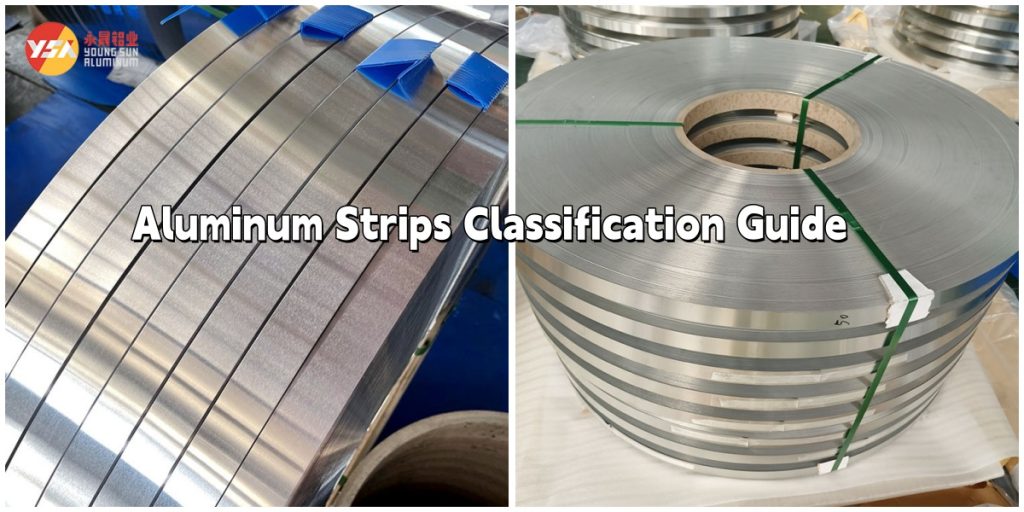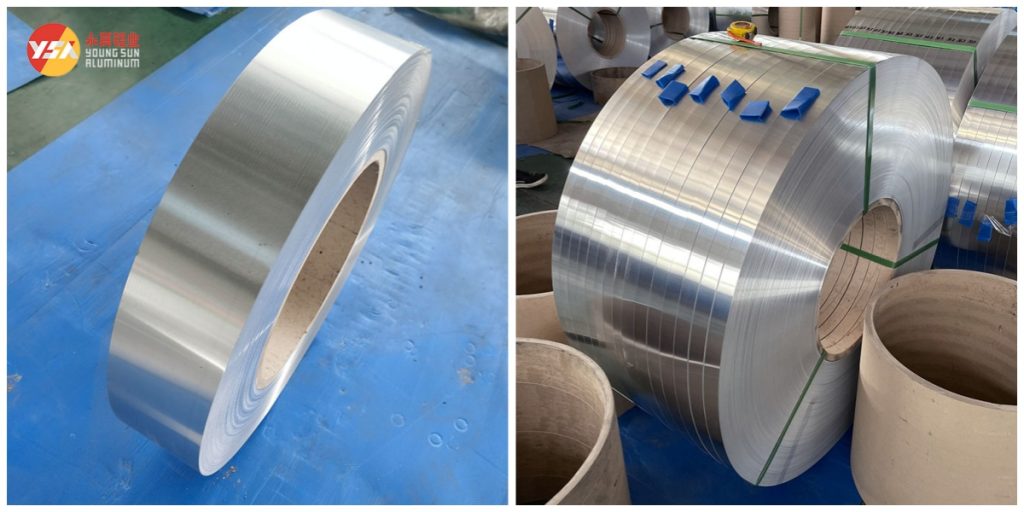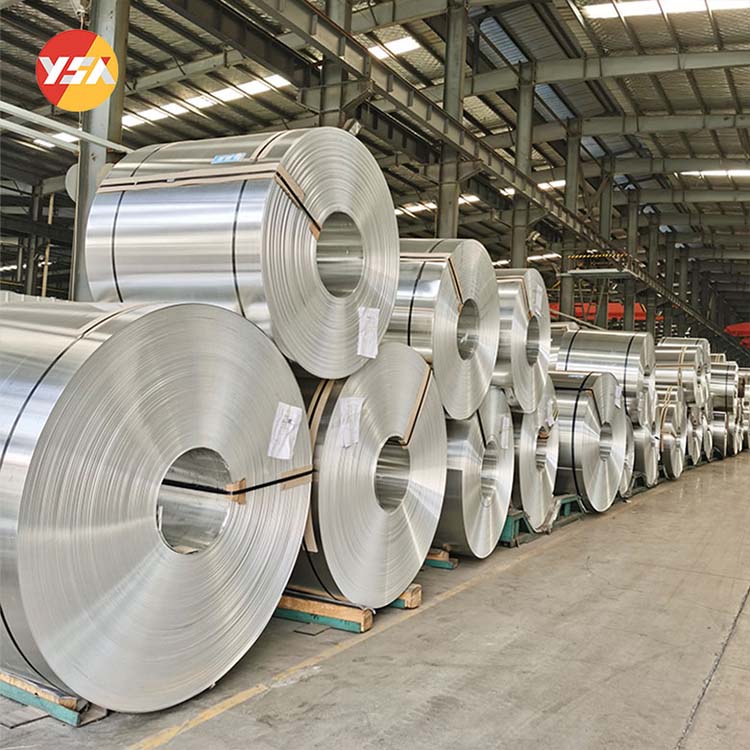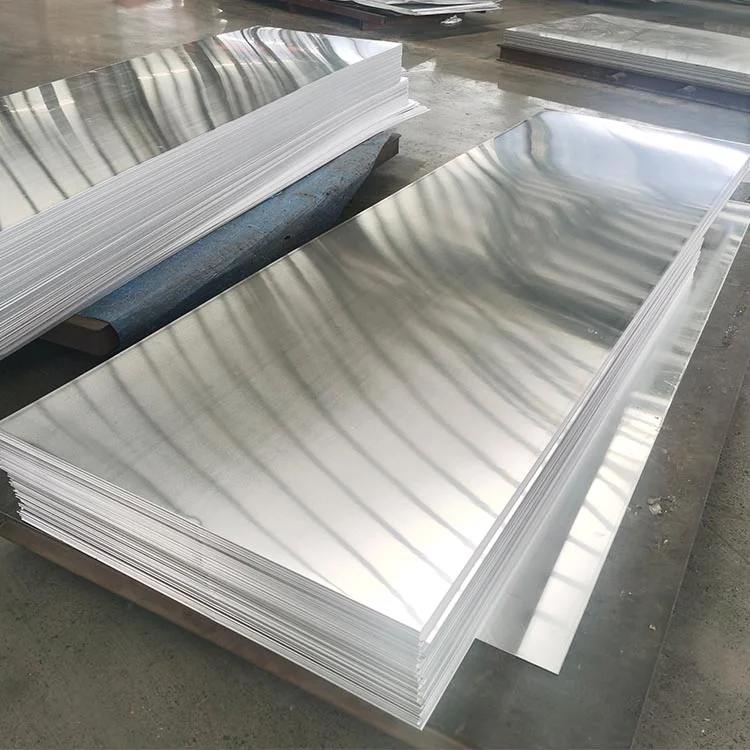
Aluminum strips is classified by alloy grade
1xxx Series
- Industrial pure aluminum (aluminum content ≥ 99.00%).
- Features: Excellent electrical and thermal conductivity, good corrosion resistance, excellent formability, and relatively low strength.
- Common grades: 1050, 1060, 1070, 1100.
- Applications: Daily necessities, signs, capacitors, heat exchanger fins, and food packaging.
3xxx Series
- Manganese is the primary alloying element.
- Features: Higher strength than the 1xxx Series, with excellent formability, weldability, and corrosion resistance.
- Common grades: 3003, 3004, 3105.
- Applications: Architectural decoration, kitchenware, tanks, blinds, and radiators.
5xxx Series
- Magnesium is the primary alloying element.
- Features: High strength, excellent corrosion resistance, good weldability, and moderate formability. Common grades: 5005, 5052, 5083, 5754.
- Applications: Ship and vehicle structural parts, pressure vessels, building structural parts, refrigerated truck panels, can lid pull tabs.
6xxx Series
- Main alloying elements: magnesium and silicon.
- Features: Moderate strength, good formability, weldability, and corrosion resistance; strength can be significantly increased through heat treatment.
- Common grades: 6061, 6063, 6082.
- Applications: Structural frames, automotive parts, piping, building profiles, electronic radiators.
8xxx Series
- Other alloying elements, such as iron and lithium, are also present.
- 8011 is commonly used in aluminum foil and bottle caps. Some special-purpose alloys, such as 8079 aluminum foil, are also included in this series.
Table 1:
| Alloy Series | Dominant Element | Tensile Strength Range (MPa) | Elongation (%) |
| 1xxx | Al ≥ 99.0% | 70-150 | 30-45 |
| 3xxx | Mn 0.5-1.5% | 110-285 | 12-30 |
| 5xxx | Mg 2.2-5.5% | 140-350 | 8-25 |
| 6xxx | Mg+Si 0.6-1.2% | 125-380 | 8-22 |
Aluminum Strips Classification by Condition
This refers to the mechanical properties and microstructure achieved after processing or heat treatment.
F
As-made condition, also known as the freely processed condition. This condition has not undergone any special work-hardening or heat treatment control.
O
Annealed condition. This is the softest condition, with the highest ductility and lowest strength. It is suitable for intense forming, such as deep drawing.
H
- Work-hardened condition. Strength is increased through processing methods such as cold rolling. This condition is usually followed by two digits.
- H1x: Work-hardened only, such as H14-H18. The higher the number, the higher the degree of hardening, the higher the strength, and the lower the elongation.
- H2x: Partial annealing after work-hardening.
- H3x: Stabilization treatment after work-hardening. Commonly used for magnesium-containing 5-series alloys to improve stability and prevent stress corrosion.
T
- Heat-treated condition, primarily used for heat-hardenable 6-series, 2-series, and 7-series alloys. The number following this indicates the specific treatment process.
- T4: Natural aging after solution treatment.
- T5: Artificial aging after high-temperature forming. T6: Solution treated followed by artificial aging.
- T8: Solution treated followed by cold working and artificial aging.
Classification by Thickness
- Ultra-thin strip/aluminum foil: Typically refers to aluminum strip with a thickness of 0.2mm or less. Applications: Food packaging, pharmaceutical packaging, capacitors, lithium battery current collectors, and thermal insulation materials.
- Thin strip: Thickness ranges from 0.2mm to 1.0mm. Applications: Household utensils, small hardware, electronic housings, labels, and some heat sinks.
- Conventional strip: Thickness ranges from 1.0mm to 6.0mm. This is the most common range. Applications: Architectural curtain walls/ceilings, automotive sheet metal, container bodies, electrical panels, and general structural components.
- Thick strip/plate: Thickness greater than 6.0mm (sometimes also referred to as greater than 4.5mm). Applications: Heavy structural components, ship decks, aerospace components, and mold bases.
By Width
- Narrow strip: Widths are typically less than 600mm. Commonly used for continuous stamping or slitting in specific industries.
- Medium-Wide Width: Widths range from 600mm to 1500mm. The most commonly used width.
- Wide Width: Widths greater than 1500mm. Primarily used for applications requiring large-area coverage or subsequent large-format slitting.
Surface Treatment
- Glossy/Rolled Finish: Maintains the original metallic luster after rolling. Most common.
- Painting/Spraying: Application of paint, fluorocarbon paint, polyester paint, etc. to provide color and protection. Applications: Building exteriors, ceilings, and appliance panels.
- Coating: Food-grade coatings and anti-corrosion coatings.
- Anodizing: Electrochemical treatment creates an oxide film that improves hardness, wear resistance, and corrosion resistance, and allows for coloring.
- Laminating: A protective film is applied to the surface to prevent scratches during transportation and processing. This film must be removed before processing.
- Embossing: A concave and convex pattern is rolled onto the surface to enhance aesthetics and slip resistance. Applications: Flooring, anti-slip treads, and decorative panels.

Classification by Application
Aluminum Strip for Packaging
- 3104/3004: Cans
- 5182/5042: Can Caps/Pull Rings
- 8011/8079: Food Packaging Foil
- 8011: Pharmaceutical Packaging, Bottle Caps
Aluminum Strip for Architectural Decoration
3003/5005: Curtain Wall Panels, Ceiling Panels, Venetian Blinds, Aluminum-Plastic Panel Core
Aluminum Strip for Radiators
High Thermal Conductivity 1 Series or Specific 6 Series Alloys: Electronic Equipment Heat Sinks, CPU Heat Sink Fins
Automotive Aluminum Strip
- 5182/5754/6016: Body Panels
- 1100/1200: Heat Exchanger Fins
- 5 Series/6 Series: Battery Pack Housings
- 6 Series: Structural Components
Aluminum Strip for Electronics and Electrical Appliances
- High-Purity 1 Series: Capacitor Foil
- 1 Series or Special Alloys: Lithium Battery Positive and Negative Current Collectors
- 1 Series/3 Series/5 Series/6 Series: Housings
- 1060/1070: Conductive Busbars
How to Choose in Practical Applications?
- Performance Requirements: What Strength and Hardness Do You Need? What Formability Do You Need? What Electrical and Thermal Conductivity Requirements Are There? What Corrosion Resistance Requirements (Ambient or Marine Environments)? What Weldability Requirements Are There?
- Processing Technology: Which of the following is Mainly Used: Stamping, Bending, Deep Drawing, Welding, Sheet Metal Forming, or Cutting?
- Usage Environment: Indoor/Outdoor? Temperature? Contact Media?
- Appearance Requirements: Are Specific Colors, Glossiness, or Textures Required? Is Subsequent Surface Treatment Required?
- Cost: Costs vary significantly depending on the alloy, alloy, and surface finish.


